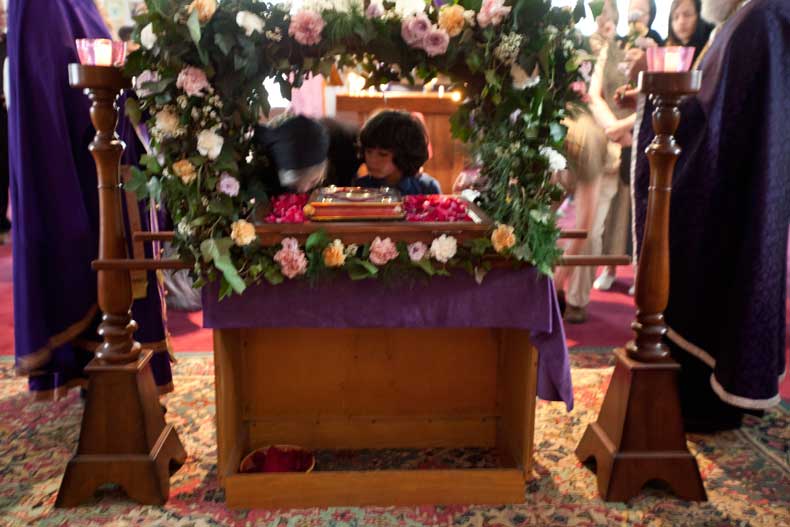 In a way, it just isn't fair to criticize the reporters and editors who work in small and even midsized newspapers. They often are forced, by the facts on the ground, to be journalistic jacks of all trades to a degree that is often staggering. It is rare to have experienced people working on specialty beats (except, of course, for stories involving religion -- oh, sorry, I meant to say sports).
So imagine, if you are a general-assignment reporter in Norman, Okla. -- being handed the assignment to cover a religious event as complex as the Eastern Orthodox celebration of Pascha, which offers layers of complicated symbols, rites, customs and small-t traditions that are woven into centuries of the ancient church's doctrines and big-T Traditions. Throw in the intricacies of Great Lent and this could be a nightmare.
In a way, it just isn't fair to criticize the reporters and editors who work in small and even midsized newspapers. They often are forced, by the facts on the ground, to be journalistic jacks of all trades to a degree that is often staggering. It is rare to have experienced people working on specialty beats (except, of course, for stories involving religion -- oh, sorry, I meant to say sports).
So imagine, if you are a general-assignment reporter in Norman, Okla. -- being handed the assignment to cover a religious event as complex as the Eastern Orthodox celebration of Pascha, which offers layers of complicated symbols, rites, customs and small-t traditions that are woven into centuries of the ancient church's doctrines and big-T Traditions. Throw in the intricacies of Great Lent and this could be a nightmare.
So the good news, speaking as an Orthodox churchman, is that the team at the Norman Transcript got most of the details right in this story from earlier in the year (which has just now been called to the attention of your GetReligionistas).
But there are a few typos that slipped past the small and, I would imagine beleaguered, copy-desk staff. Take this one for example, in a section in which parishioner Edward Adwon is explaining the history of the sanctuary (including the interesting case of the stolen Greek chandeliers):
All Orthodox churches, Adwon said, are built with the congregation and the alter facing east “because the east is where the Holy Land is.”
That would be "altar." Actually, it is customary for all sanctuaries in the ancient Christian churches to be built facing to the east, in the direction of the Resurrection and the Second Coming.
However, here is the mistake that inspired a correspondent to send us this URL. Any Orthodox Christians who are reading this are urged to set down any beverages that are currently in your hands and to swallow that last sip before reading on. Ready?
“During Holy Week, starting with Palm Sunday, we will have services every night. On Holy Friday, we will reenact the burial of Christ. We do that by having a beer, which is the representation, and we will come outside and we will make a procession around the building. We also do that on Palm Sunday. That is representing Christ’s entry into Jerusalem, which he did on the Sunday before his Resurrection,” Adwon said.
Actually, that would be a "bier," an ornate model of a tomb that is covered in flowers and carried in procession through the dark of the night. It contains the "epitaphios," a richly embroidered cloth that contains an icon of the body of Christ, after it has been removed from the cross.
So for those who keep reference materials on religion-beat issues will want to note that last hyperlink and then bookmark it -- orthodoxwiki.org.
Meanwhile, let me again stress that the proper word was "bier," not "beer." I mean, I know my share of Orthodox folks who love to party, but not in Holy Week. The early hours of Pascha morning in the great feast? That's another matter.
Hang in there, small- and mid-market journalists! Have courage and dive in.
But this is journalism. Just do it. The religion-beat is complex, but professionals can approach it the way they do any complicated subject -- with patience, caution and lots of trips to online reference materials. Oh, and ask those sources lots of follow-up spelling questions about technical and historical terms.
For the comment pages! GetReligion readers, what are some of your favorite media religion-beat typos or errors of this kind? If at all possible, provide URLs. Kind of like this one, which contains some classics.
Photo: Worshipers in an Orthodox parish venerate the Gospels and the epitaphios icon inside the symbolic tomb of Christ.
